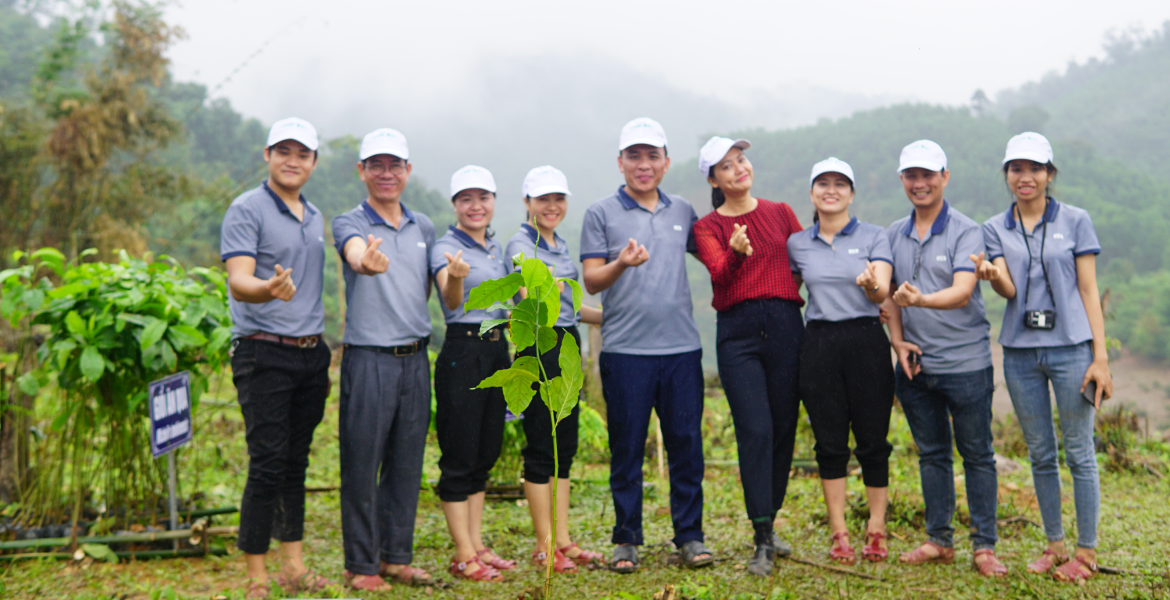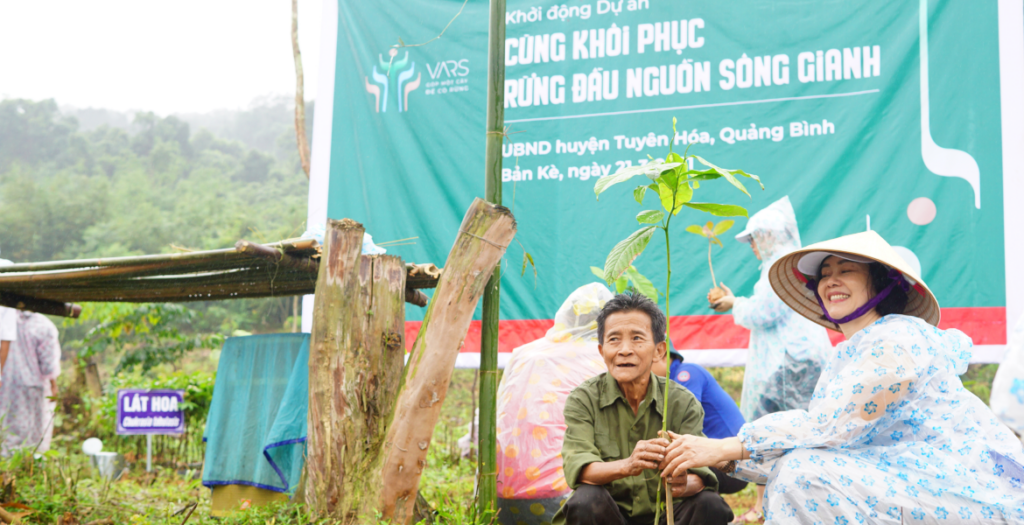Watershed Forest Restoration

Facing the Problem

Forests play an important role in climate regulation, disaster control, ecological balance and providing forest products for the life and livelihood of the community. However, in recent years, forests have been severely damaged by many causes such as deforestation, forest fires, and conversion of forest use purposes.
![]() Only in the 10 years from 2010 to 2020, the whole world has lost about 100 million hectares
Only in the 10 years from 2010 to 2020, the whole world has lost about 100 million hectares ![]()
The loss of forests in large quantities has caused natural disasters, floods, storms, and droughts to increasingly strongly affect the socio-economic – food security of countries, especially communities. live near forests and rely on forests and communities living downstream of rivers.
VIETNAM RANGES #2 IN THE WORLD IN PREVENTION OF PRIORITY OF PRIVATE FOREST CLEARANCE*
- 22,800 ha of forest damaged from 2011 – 2019**
- Vietnam is one of the 5 countries with the highest risk of natural disasters globally, estimated losses account for 1.5% of GDP annually***
- Vietnam is experiencing more and more floods exceeding historical milestones, such as floods in 2010, 2016, 2017, 2020 in the Central region; Floods and flash floods occur with high frequency in the mountainous areas of the Northwest, Central and Central Highlands
- The Mekong Delta region is heavily affected by drought and saltwater intrusion
- Livelihoods of communities living near and dependent on forests are strongly affected
- The forest is lost, the cultural identity and indigenous knowledge also fade away and disappear
![]() The forgetting and disappearance of indigenous knowledge threatens the goal of sustainable development and disrupts the community fabric.
The forgetting and disappearance of indigenous knowledge threatens the goal of sustainable development and disrupts the community fabric. ![]()
Although, Vietnam has many programs to directly support the community, however, developing sustainable livelihoods for the community, fighting poverty and ensuring food security in the highlands is still a challenging issue. aware and worthy of attention.
*according to survey data of 53 ethnic minorities (published on April 1, 2019)
Damage due to floods, landslides in the Central region, 2020
249
dead, missing
1.531
building collapse
36,000 billion VND
damages
* according to FAO report (2005)
** according to the statistics of the General Department of Forestry
*** According to the Asia Foundation’s 20-year report
PRIZE WHAT FRANCE?
For Problem?
Forest protection and restoration becomes one of the priorities
Top
- One of the 100 leading countries in promoting the agreement to prevent and reverse deforestation at COP 26
- The project of 1 billion trees for the period 2021 – 2025 approved by Prime Minister Nguyen Xuan Phuc, of which 310 million trees are planted with an area of 180,000 hectares of forest.
- Before that, in the period of 1998 – 2005, the Vietnamese government had made clear moves to limit deforestation with the project of planting 5 million hectares of new forest.
Solutions From CEGORN
Restoration of watershed forests
Operating in the field of resource development, since its establishment, with a team of experts with many years of experience in forestry and forest development, CEGORN has implemented many programs to enrich forests with indigenous trees in combination with livelihood development programs under the forest canopy, in order to protect forests sustainably.
From 2021, responding to the Prime Minister’s call for 1 billion trees, CEGORN together with VARS implemented the program of Planting and rehabilitating the Gianh river watershed forest in Quang Binh, one of the localities frequently affected by the impacts of climate change. great impact of storms and floods.

The program supports communities, individuals, households, organizations and units in the area who have the need to plant forests with native trees. With the goal by 2030, to plant 1000 ha of forest in Tuyen Hoa district alone and add other areas in the Gianh river watershed.
After 1 year of implementation, the program has expanded to Minh Hoa district (Quang Binh), Son La province and Thu Bon river upstream area (Quang Tri). It is expected that the project will soon expand and deploy in the watershed area of Thach Han river – Quang Nam.

Protecting forests in a sustainable way
The project is a socialization program, with the contribution of organizations and individuals to support 50,000 VND for a tree to be planted, including the cost of seeds, fertilizers, support for planting and care in phase 3 the first year before the forest begins to close its canopy. In the first stage, people can plant short-term agricultural crops to maintain their income, and after the forest closes, they can develop forest products under the forest canopy to improve their livelihoods and develop the forest. lasting.
The selection of native trees, in addition to ensuring the survival rate and development to become a forest due to the convenience in the process of adapting to the soil and climate, also helps to preserve the genetic resources of native seedlings. The protection and restoration of forests with native trees helps communities living near the forest maintain their traditions and cultures, and at the same time preserve the living space to develop their culture and knowledge. .
In addition to the specific watershed rehabilitation program, CEGORN is also conducting agroforestry models, supporting watershed restoration in conservation areas, such as the white-necked langur conservation area in the forest. Special use in Tuyen Hoa district.
Related Posts
Tag

